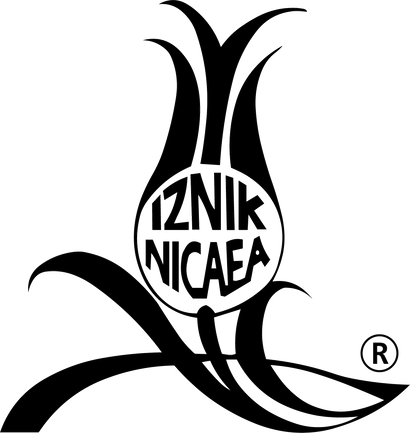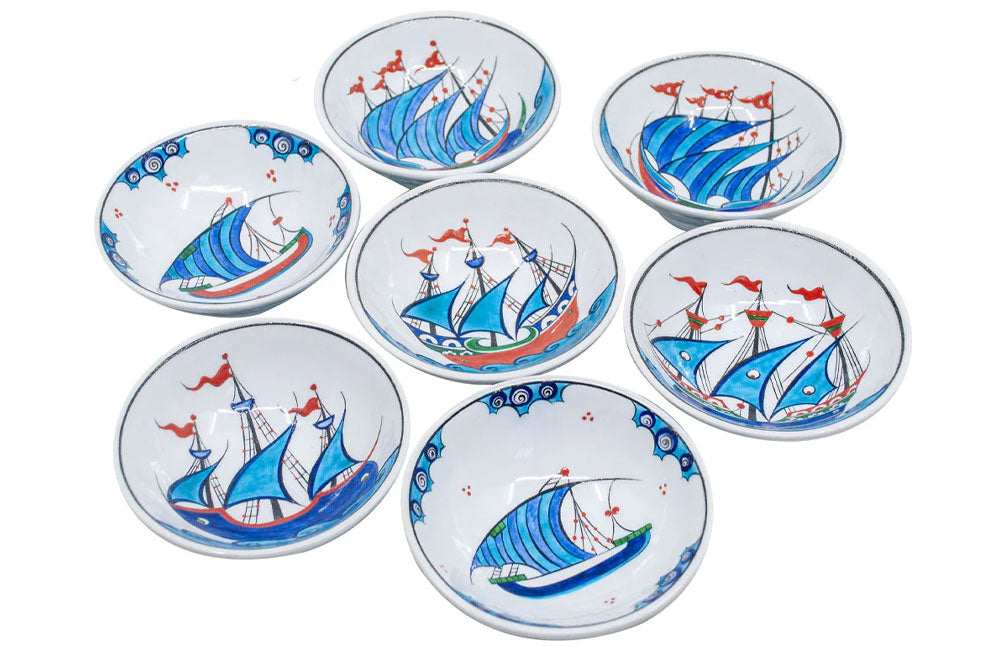Welcome to Iznik tile world
Welcome to Iznik tile world
How to Make Iznik Tiles
September 03, 2017 4 min read

In this page, we will show you a short and beautiful video about how to make Iznik tiles and we will give the short information about Ottoman Iznik tiles. You will simply see through which stages the wonderful Iznik tile art has become a product. With more than 40 years of experience and knowledge, world famous artist Mehmet Gursoy and his wonderful team continue to produce high-quality Iznik tiles and ceramics today. Gursoy, who crowned his success with the award given by Unesco, shows us how successful he is in this art.
Ottoman Iznik Tiles
Early Ottoman
Following the establishment of the Ottoman Court in the former capital of the Byzantine Empire and the Ghost of Constantinople in the second half of the fifteenth century, many artistic production areas were renewed and reformed. These changes reflected the integrity of a protected court, especially in book arts and the textile industry. This court appeal, It seems that II.Mehmet's sovereignty has begun to produce perfect technical perfection ceramics products designed for a new elite who are willing for luxury objects towards. The production of high-quality ceramics would last for sixteen centuries before the gradual decline during the seventeenth century.
These high-quality ceramic goods, which were referred to as tiles in the Ottoman documents, were designed for the internal market of the Ottoman Empire but were also exported to Italy, especially outside the empire; Local imitations of the goods exported here. Despite being the main production center of Iznik, these ceramic goods were produced in the city of Kütahya, as evidenced by the excavated findings made there. Istanbul may also be the place of scattered production directly linked to the commissions in the courts at the same time.
The composition of the tin-opaque lead-alkaline seal covering the decoration was another distinguishing feature of Iznik ceramics. This vitreous substance is a fairly pure compound characterized by a very low potash and magnesium content; These trace elements traditionally found in lead-alkali glazes are derived from the alkaline flow obtained from the ash of plants coming from coastal regions or desert regions. Virtually no such remains may be due to an additional ash purification phase that has been used to produce the Venice Cristallo glass from the mid-fifteenth century and which may have come to the attention of the Iznik potters. However, there is a small amount of tin in the highly transparent glazes of Iznik ceramic ware. For Iznik ceramics, ignition temperatures can only be estimated; These estimates range from 850-900 ° C to 1200 ° C.
Ottoman Empire Ceramics
The golden age of Iznik ceramic goods has undergone a very formal evolution throughout the nineteenth century and has begun to diversify the decorative repertoire with the decreasing tendency from the beginning of the seventeenth century. Despite the lack of dated artworks, art historians have combined the relative chronology of evolution in the Iznik ceramics to limit the appearance of stylistic stages and the emergence of certain forms.
Between 1480 and 1520, cobalt blue is used mainly in decorative colors and different concentrations of the same pigment to achieve many pigment concentrations. This first phase was dominated by the combination of stylized vegetal forms unique to the Islamic repertoire called the Rumi to the Greek Seljuks and the flower motifs (Chinese Ottoman Hatay), also known as hatayi, inspired by Chinese art.
Copper oxides were associated with cobalt blue towards the end of the turquoise 1520s. With the diversification of the Iznik ceramics repertoire, a number of styles would coexist between the years 1530-40: the tugrakes spiral style inspired by the illuminations of the imperial monograms; "The style of the potters" containing new features such as a new flower-based record; Or a series of tracks with one or more degrees of reputation that imitate Chinese models. This wave of Chinese inspiration is evident in the emergence of three grape grapes, a bouquet of lotus, and a spiral scroll of flowers with reserves in the center of the food that will be constantly reinterpreted for decades to come. While Safavid ceramicists gladly accept the figurative animal repertoire or landscape elements in the genre stages of Chinese ceramic products, the Ottoman ceramics have come up with composition plans and a series of domestic motifs, wave boundaries, meander lines, rosettes, lotus leaves, They have proposed.
In the 1540s, the color palette of the Iznik ceramics was enriched markedly with a green that ranged from acacia to olive (probably introduced in 1530) and a green manganese oxide-based aubergine. This color scheme is sometimes called "Damascene" because it is similar to the color schemes found in tiles and cups produced in Damascus during the Ottoman period. In this first multicolor phase, the effect of sash drawings can be seen more clearly. This style, which is Tabriz's unique designer and employed in the courts since 1525, found the best expression in ink drawings in ink drawings, including composite flowers and highly complicated versions of Chinese artistic lotus flowers and peonies. The long serrated leaves, known as long-curved daggers, resemble a dagger (Turkish dagger). The lilies, carnations, hyacinths, and violets, which are highly valued by the Ottoman elite for their passion for horticulture, are slowly being used to enrich their compositions.
Also in News
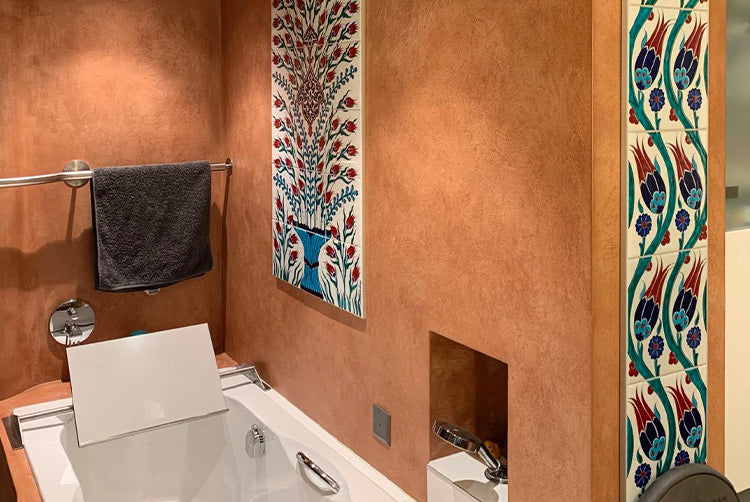
Iznik Bathroom Tiles: Combining Traditional Art with Modern Bathroom Design
December 09, 2025 1 min read
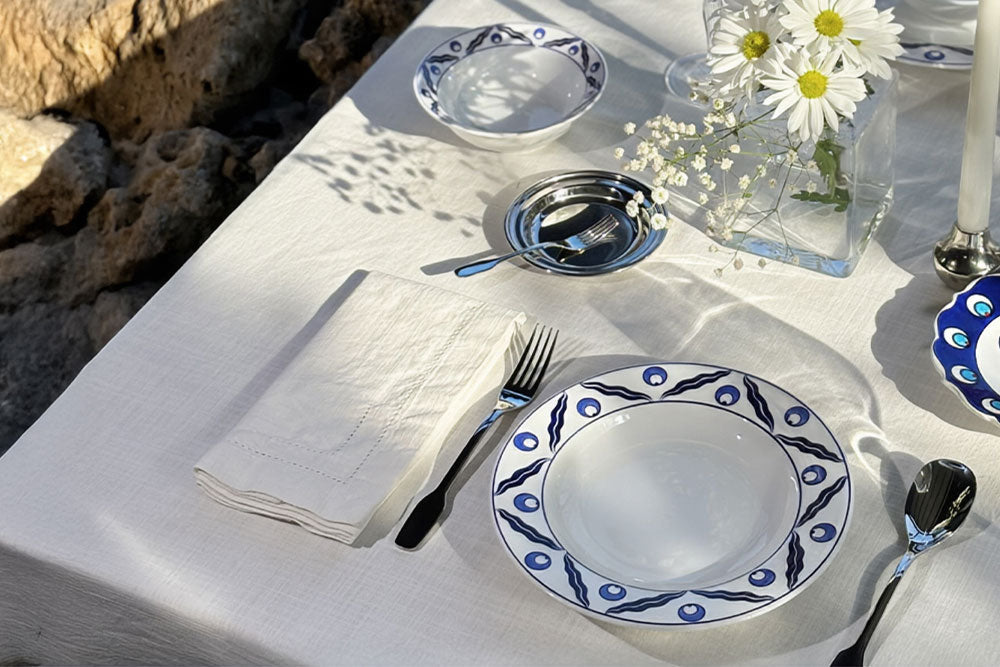
Rediscovering Timeless Beauty: Handcrafted Iznik Ceramic Dinnerware for the Modern Table
April 08, 2025 2 min read
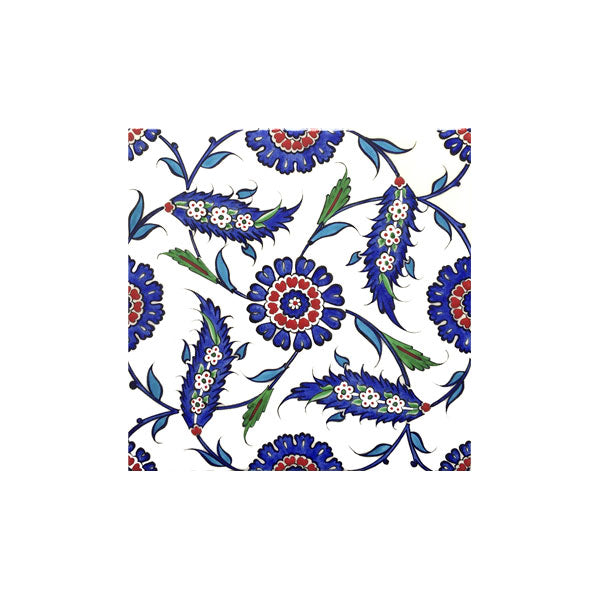
Thank you for being here!
Join us to discover the latest in Iznik tiles, enjoy special offers, and celebrate the beauty of Turkish artistry together.
